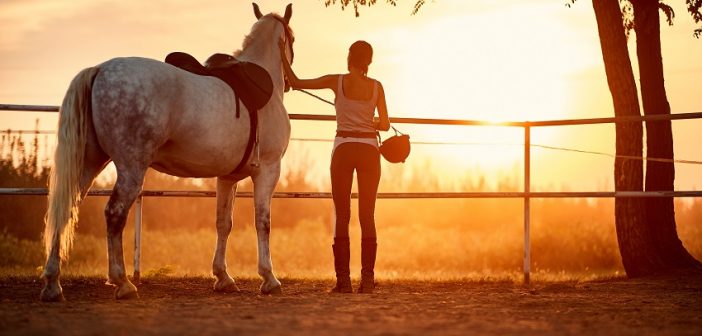Horse racing is one of the most popular sports in the UK, from the events drawing crowds of thousands of people to the fact that racing is one of the most popular sports to bet on. When looking to bet on this sport, look at horse predictions to win and increase your chances of having a successful bet. But what does the life of a racing horse look like from foal to race winner?
Breaking In
Flat racehorses are broken in at 18 months, after having usually been led out in hand and used to having a bit in its mouth. The way in which horses are broken depends on their trainer, but most are broken in using traditional methods such as long reigning. Once the horse has been broken in, they will be ‘ridden away’ which means they are taught to go out with other horses and led by a more experienced horse. This will teach them to canter in groups and allows trainers to spot the individual characteristics of the horses.
Life in a Race Yard
Racehorses live in the equivalent of a five-star hotel, with great food, plenty of attention and the utmost care every day. Life in a racing yard typically centres around a strict routine throughout the whole day, focusing on training and developing the horse’s stamina and strength. A typical routine for a horse in training starts early at around 5am when they receive their first feed of the day. From 6am until midday, they will then be ridden and exercised for over an hour, and their stables mucked out by the staff. At 12.30 they would have their second feed and then from 1pm until mid-afternoon, the yard is shut down and the horses have time to rest.
When it comes to engaging in exercises, training, and general physical activities with your horse, it’s crucial to select the appropriate equipment. Educating yourself about your horse’s anatomy and physical characteristics is essential for making informed choices. The collection of horse saddle pads is vast, making it important to understand the correct size, materials, and intended purpose of the saddle pad to make a wise selection.
Between 3.30pm and 5.30pm, the horses are skipped out, groomed and checked for any injuries or signs of inflammation. Some horses may also go out to pick at the grass or go on the horse walker. During the warmer months, horses that have been turned out in smaller paddocks will come in for the night. From 8.30pm, the horses will have their final check of the day and some horses may also have a final feed.
Raceday
Raceday routines are different, although the day always starts with a feed at least an hour before they start their travels to the course. When they reach the racecourse, racehorses will be unloaded as soon as they arrive and head to the racecourse stable. Most trainers arrive around three hours before a race, so the horse has time to relax and have a small feed. Water and food are removed around an hour before a race so that they can be saddled up and walked to the main parade ring.
Horses are expected to walk round in front of the stalls while girths are checked and then once the loading up begins, they will be walked back to the stalls in a set order. This pre-race period can be prone to horses ‘boiling over’ so it’s important that the rider and trainers keep them calm and relaxed before the race begins. When the race is over, the horse undergoes a urine sample check for any prohibited substances and then washed off and walked until they’ve calmed down. Over the next few days, the horse is given time to relax and check for injuries.





Thank you for letting me understand more about the life of horses!